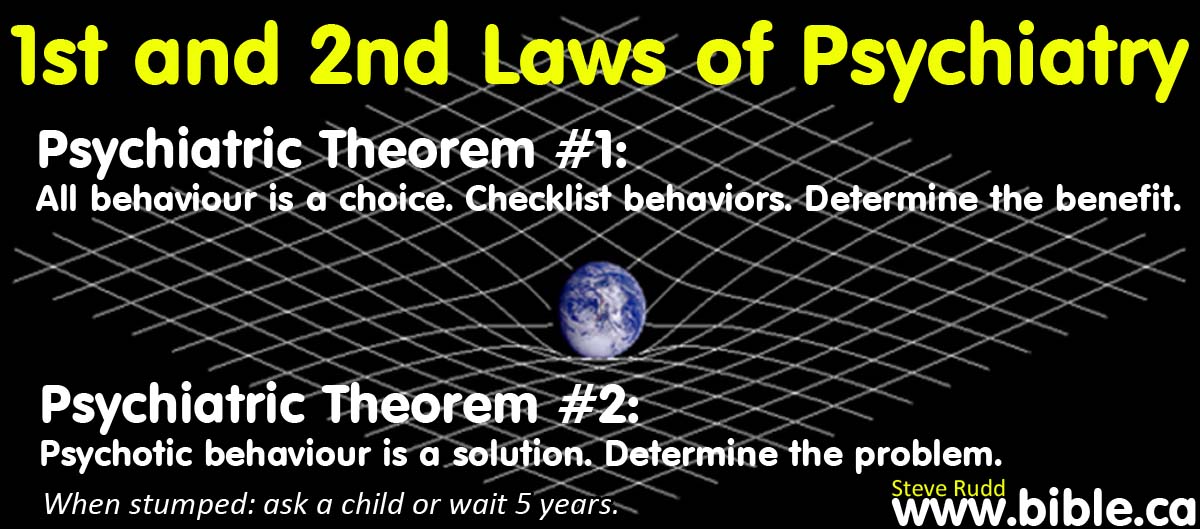The case of "Bedridden" (Hysteria)
Casebook of Biblical Psychiatry © Version 7 (CBP-7)
|
Based upon |
Casebook of Biblical Psychiatry© brings the principles of Biblical Psychiatry to life based upon real-world cases and familiarizes Christians with different types of situations. This practical companion volume to Biblical Psychiatry© includes not only diagnosis, but also in-depth discussions by experienced Christians for Biblical approaches to treatment. This meticulously detailed volume of dynamic real-life case studies is simply a "must read" for all clinical Psychiatrists, mental health care professionals and Christians interested in expert opinion on today's treatment approaches. Psychiatric students, educators, and practitioners—as well as social workers, nurses, medical physicians, and interested laypersons—will find this unique volume of inestimable value in their day-to-day work.
|
|
|
|
|
The case of |
|
|
|
|||||
|
|
The case of "Hysteria" |
||||
|
|
Biopsychiatric labels DSM-5 |
Hysteria, Conversion disorder |
|||
|
|
Checklist Behaviours DSM-7 |
Sloth, laziness |
|||
|
|
Insights MMPI-7 |
|
|||
|
|
Quick Pick EDS-7.1 |
Deception, lying, Dependency |
|||
|
|
Self-disablement EDS-7.2 |
Employment: Time off work in asylum |
|||
|
|
Chemical imbalance EDS-7.3 |
||||
|
|
Benefits EDS-7.4 |
unknown |
|||
|
|
Monetary EDS-7.5 |
- |
|||
|
|
Annoyance Scale EDS-7.6 |
High |
|||
|
|
Diagnostic Laws EDS-7.7 |
Law of Narcissistic Behaviour Choice (NBC) EDS-7.7.1.NBC Law of Derivative Personal Benefit (DPB) EDS-7.7.2.DPB Law of Domino Problem Transference (DPT) EDS-7.7.4.DPT Law of Diagnostic Anosognosia Relativism (DAR) EDS-7.7.7.DAR |
|||
|
|
Determine the Problem |
Unknown |
|||
|
|
Ask a Child |
||||
|
|
5 years later EDS-7.7.LPT |
||||
|
|
|
||||
Silas Weir Mitchell 1829-1914 AD: Two bedridden women are cured of paralysis when one has her bed sheets set on fire and the other is threatened with rape.
"Mitchell was famous for his sometimes eccentric approach to patients with functional illnesses. He was asked to see a patient who was thought to be dying, and soon sent all the attendants and assistants from the room, emerging a little later. Asked whether she had any chance of recovery, he said "Yes she will be coming out in a few minutes, I have set her sheets on fire. A clear-cut case of hysteria!" Another story is that he was confronted with a lady who had a similar problem and having tried all the tricks he knew to induce her to leave her bed, threatened her with rape and commenced to undress. He got to his undergarments when the woman fled the room screaming! These stories may have grown with the years since in many ways he was rather prim, and Freud’s writing shocked him. He is said to have thrown a book on psychoanalysis into his fire, exclaiming, "Where did this filthy thing come from?" (www.whonamedit.com/doctor.cfm/959.html)
Discussion:
Hysteria is the manufacture of behaviours to portray oneself as insane or medically sick for personal benefit. These two women had disabled themselves for selfish reasons that are unknown. It actually doesn't matter why they chose to fake that they were dying. This is not a story of people in an asylum but a medical hospital. Again it matters not for our purposes. The doctor was asked to "treat drama not disease". Whose performance was more "over the top?" Was it the woman lying on her "deathbed" pilfering the resources of a hospital or the doctor who set her bed sheets on fire to cure her? You treat disease with medicine and drama with drama.
"Some nineteenth-century physicians-notably the famous American neurologist Silas Weir Mitchell (1829-1914), inventor of the legendary "rest cure" named after him-recognized that hysterics were malingerers. Having worked as a physician during the Civil War, he saw a good deal of malingering and understood it for what it was: the rational assumption of the sick role. Confronted with such persons-regardless of whether they were called "hysterics"-he realized that the person who assumes the sick role is not necessarily sick and that hysteria is not a bona fide disease. ... Realizing that the problem he was called upon to treat was drama, not disease, Mitchell treated it accordingly. Consulted about a woman believed to be mortally ill, Mitchell dismissed all present in the room and then left himself. "Asked of her chances of survival he answered: 'Yes she will run out of the door in two minutes; I set her sheets on fire.' Seeing another hysterical woman who claimed to be unable to get out of bed, he "threatened her with rape and commenced to undress. He got to his under-garments when the woman fled the room screaming." (Psychiatry: The Science of Lies, Thomas Szasz, 2008 AD, p 26)
Benefits from behaviour: This illustrates the Law of Narcissistic Behaviour Choice (NBC) EDS-7.7.1.NBC
- As we said above, we do know why these two women were motivated to act like they were sick and dying when nothing was actually wrong with them. However they clearly were deriving some personal benefit from the theatre. It could have been to escape work, unhappy home life, a husband she hated, control over some situation.
- This case is very similar to the case of "Shampoo", where a woman deliberately gets herself thrown in a mental hospital because she wanted to retire early. The point is that we really don't need to know why. Historically women were often successful in fabricating medical illnesses and diseases because of the crudeness of medicine 100 years ago. Today's sophisticated medicine can rather quickly spot in imposter and therefore the asylum, not the hospital is the destination of choice for these women's modern counterpart.
- Just as there were few medical tests for most diseases 100 years ago, there never have been any medical tests for any mental illness including schizophrenia, anxiety, depression etc.
Diagnostic laws that are seen illustrated in the case of "Bedridden":
- These women went to extremes to gain some unknown benefit. They calculated the cost of upsetting all their loved one's that they were dying on their deathbed, was worth the benefit they would derive from this behaviour choice. This illustrates the Law of Derivative Personal Benefit (DPB) EDS-7.7.2.DPB
- Whatever problem they were solving by laying sick in a hospital bed, they were prepared to cause a lot of other people huge problems. The time and money cost of the hospital stay and doctors. The prayers said in church for God to heal them. It is just evil. This illustrates the Law of Domino Problem Transference (DPT) EDS-7.7.4.DPT
- The women were hoping that the doctor would label her with some disease she knew was wrong. It was their lack of faith in the doctor's ability to diagnose accurately that they were relying upon to continue their fraud. This illustrates the Law of Diagnostic Anosognosia Relativism (DAR) EDS-7.7.7.DAR
By Steve Rudd: Contact the author for comments, input or corrections.
Send us your story about your experience with modern Psychiatry


